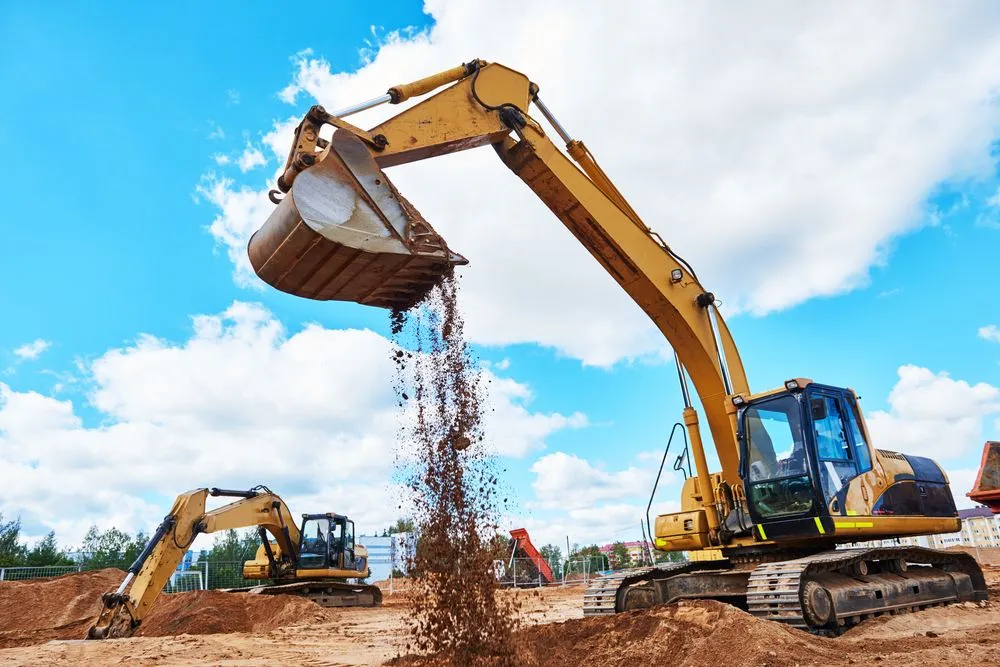Starting a construction project typically begins with preparing the site, a step that sets the stage for the outcomes ahead. Excavation, which involves digging into the ground, is a critical part of this phase that demands careful planning and precise implementation. Before heavy machinery breaks ground and opens up soil layers, several important factors must be considered to ensure a smooth process. This manual dives into the elements that must be addressed before starting excavation work.
Understanding Site Conditions
Understanding the conditions on the site is crucial for the excavation process, as it involves factors such as soil characteristics—including clay, sand, and rocks—water table levels and the presence of vegetation. An excavation company considers all of these factors, which contribute significantly to the project’s success. Different types of soil require specific techniques and tools for excavation. For example, clay, sand, and rock each present unique challenges. Higher water tables might necessitate methods to reduce water content in the area, while dense vegetation may need to be cleared before excavation can commence.
Obtaining Necessary Permits
Before commencing any activities on the project site, it is essential to obtain the necessary permits first and foremost. Construction ventures typically require a variety of permits, such as zoning permits for land use regulations and building permits for compliance, along with other clearances. Different regions may have specific prerequisites and deadlines; therefore, engaging in discussions with local officials is crucial to adhere to regulatory standards and prevent potential setbacks or penalties. Moreover, acquiring permits not only delineates safety protocols but also ensures that the project meets all legal requirements.
Conducting a Site Survey
An in-depth analysis of the site provides essential information about its condition and potential hazards to be cautious of before any work begins. Mapping out the terrain helps visualise any changes in elevation while confirming the property boundaries, which ensures clarity. Detecting buried utilities, such as gas lines or water pipes, is crucial for avoiding any harm during construction activities.
Planning for Erosion Control
Ensuring erosion control is vital when undertaking excavation tasks, as it can cause soil disturbances that result in runoff affecting nearby water bodies and ecosystems. Implementing erosion control methods, such as silt fences or sediment basins, helps reduce environmental harm. Preparing these strategies before commencing excavation work aids in maintaining the natural beauty of the surrounding area and ensures adherence to environmental rules and regulations.
Preparing for Utility Relocations
Utilities can make excavation work more complex, as power lines and water systems might need to be moved for construction purposes. Coordinating with utility providers is crucial to prevent any disruptions in services. Identifying utility placements during the planning phase helps avoid setbacks and ensures the safety of both workers and locals. At times, temporary redirection of services might be needed, making it important to communicate clearly with everyone involved.
Assessing Environmental Impact
Environmental factors must always be taken into account during site preparation work to avoid any impact on the surrounding ecosystem and wildlife due to excavation projects and construction activities in the area. It is essential to conduct an impact assessment to identify potential risks and develop strategies for mitigating them effectively. Seek input from specialists to ensure that construction activities align with sustainability objectives and adhere to all regulations.
Selecting Appropriate Equipment
Selecting the appropriate tools is essential for excavation work to proceed smoothly and efficiently. Various factors, such as the type of soil being dealt with, the size of the project, and the accessibility of the site, all play a role in determining which equipment should be utilised. Excavators, bulldozers, and backhoes each have specific purposes and functions in operations.
Ensuring Safety Protocols
Safety is always a concern at construction sites, where excavation work carries risks such as collapses, accidents involving equipment, and exposure to harmful substances. By implementing safety measures, such as conducting training sessions, opting for regular safety checks, and ensuring clear communication about established safety guidelines, you can create a safe working atmosphere. Following health and safety regulations is vital to provide reassurance for everyone involved.
Budgeting and Scheduling
Successful excavation involves careful planning and organization of finances and time management to prevent costs and delays due to weather or unforeseen obstacles. Regular project evaluations are essential to stay on track with the budget and schedule, ensuring timely project completion and efficient resource management.
Conclusion
Undertaking site excavation plays a crucial role in construction projects, requiring meticulous planning and attention to detail to ensure the smooth execution of the tasks ahead. By assessing site conditions, obtaining necessary permits, and proactively addressing environmental issues, one can pave the way for a successful excavation process. This process prioritises safety measures, selects the appropriate equipment, and establishes a solid foundation for ongoing project advancements.

